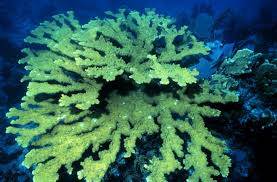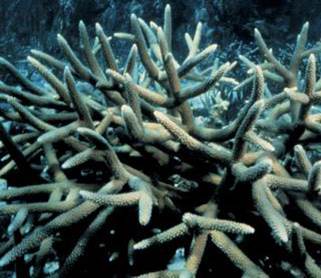Plan contains actions necessary to recover elkhorn and staghorn species
NOAA Fisheries is publishing a recovery plan for elkhorn and staghorn corals. The plan identifies criteria that, when met, will allow the coral species to be removed from the list of threatened species under the Endangered Species Act (ESA).
Coral reefs are critical to the health of marine ecosystems and have measurable economic value to coastal communities around the world. They provide food and shelter for more than 25 percent of fish in the ocean and up to two million marine species, shoreline protection from damaging effects of major storms, and about $483 million annually to the U.S. economy through tourism and recreation.

The recovery plan contains two dozen actions needed to recover the species and addresses research and monitoring, ways to reduce threats, and enhance the population by actively growing corals in nurseries and putting them back on the reef.
Elkhorn and staghorn corals were once the dominant coral species on Caribbean reefs, but since the 1970’s have declined between 92 and 97 percent. The main causes of the past decline were disease, temperature-induced bleaching, and storms. Both were listed as threatened under the ESA in 2006. NOAA Fisheries proposed to reclassify them as endangered in December 2012 but in September 2014 published a final rule maintaining them as threatened.

“Although specifically written for elkhorn and staghorn corals, the recovery plan contains actions that will benefit coral reef ecosystems as a whole”, said Eileen Sobeck, Assistant Administrator for NOAA Fisheries. “There are many actions we can take at the local level to improve the ability of corals to cope with global threats. We can use lessons learned from this plan for recovery of the additional coral species recently listed as threatened under the Endangered Species Act.”
Some of the local threats to the species include disease, loss of recruitment habitat, pollution, reduced reproduction, and physical damage.
The recovery plan does not include any proposed regulations. Instead, it serves as a roadmap to species recovery, charting how to accomplish it. The plan was developed by a 19-member team consisting of state, federal, and academic partners.
The recovery plan is available on the NOAA Fisheries website http://sero.nmfs.noaa.gov/pr/esa/acropora.htm.
NOAA’s mission is to understand and predict changes in the Earth’s environment, from the depths of the ocean to the surface of the sun, and to conserve and manage our coastal and marine resources.
| Contact: | Allison Garrett(727) 551-5750 Jennie Lyons (301) 427-8013 (202) 603-9372 (Cell) | FOR IMMEDIATE RELEASE: March 5, 2015 |
